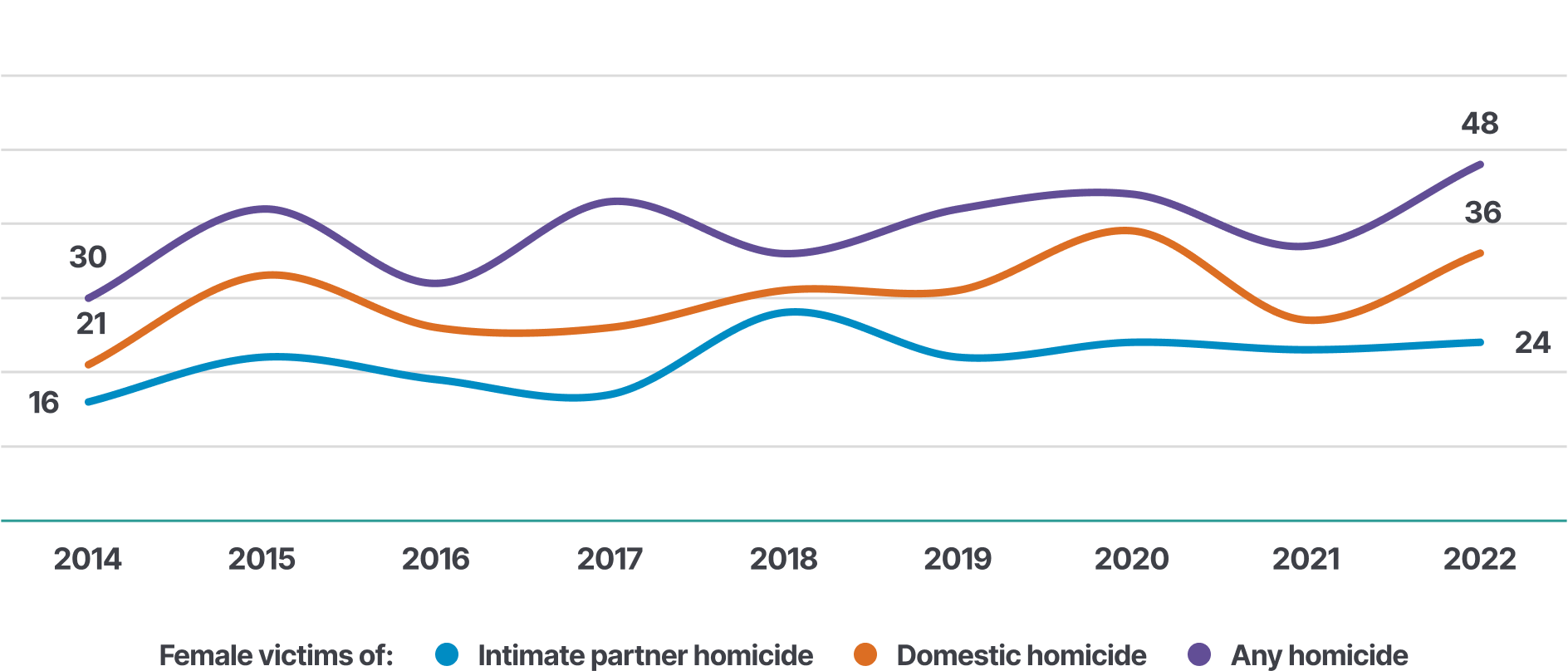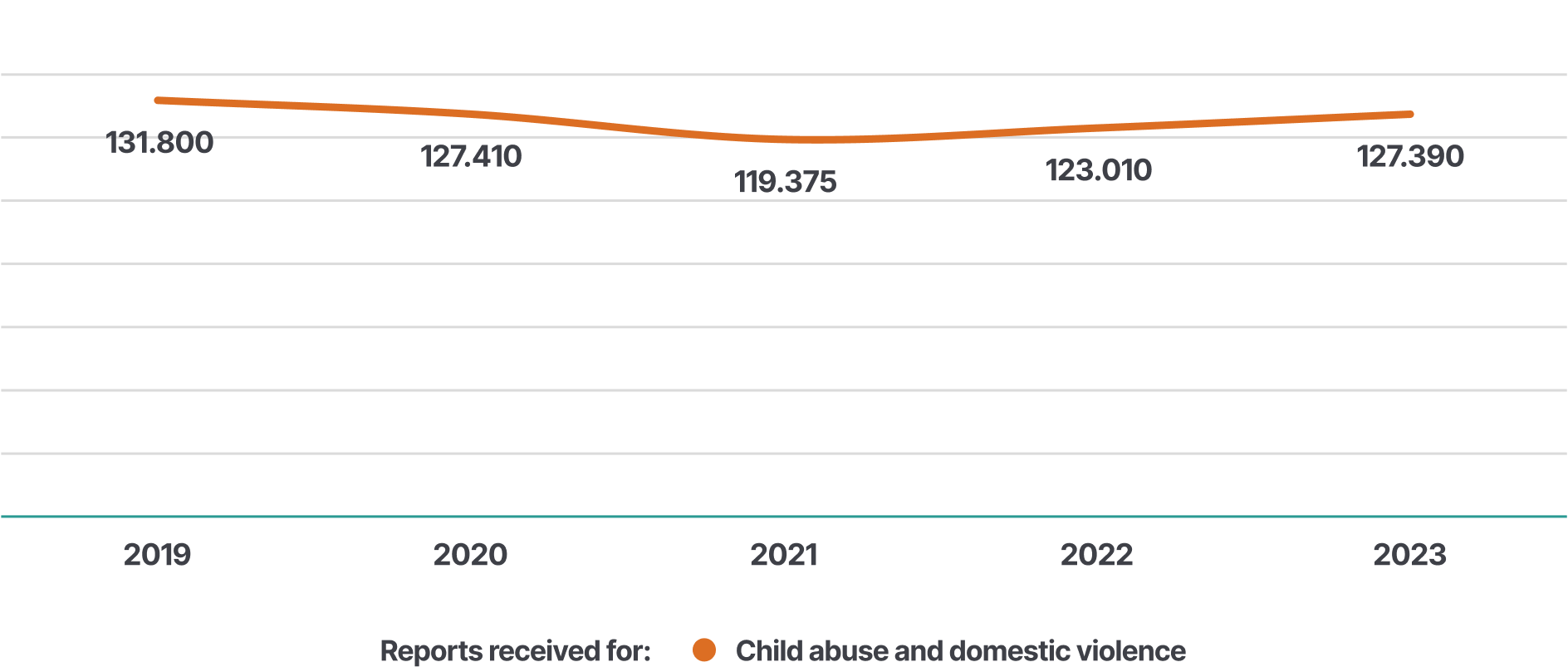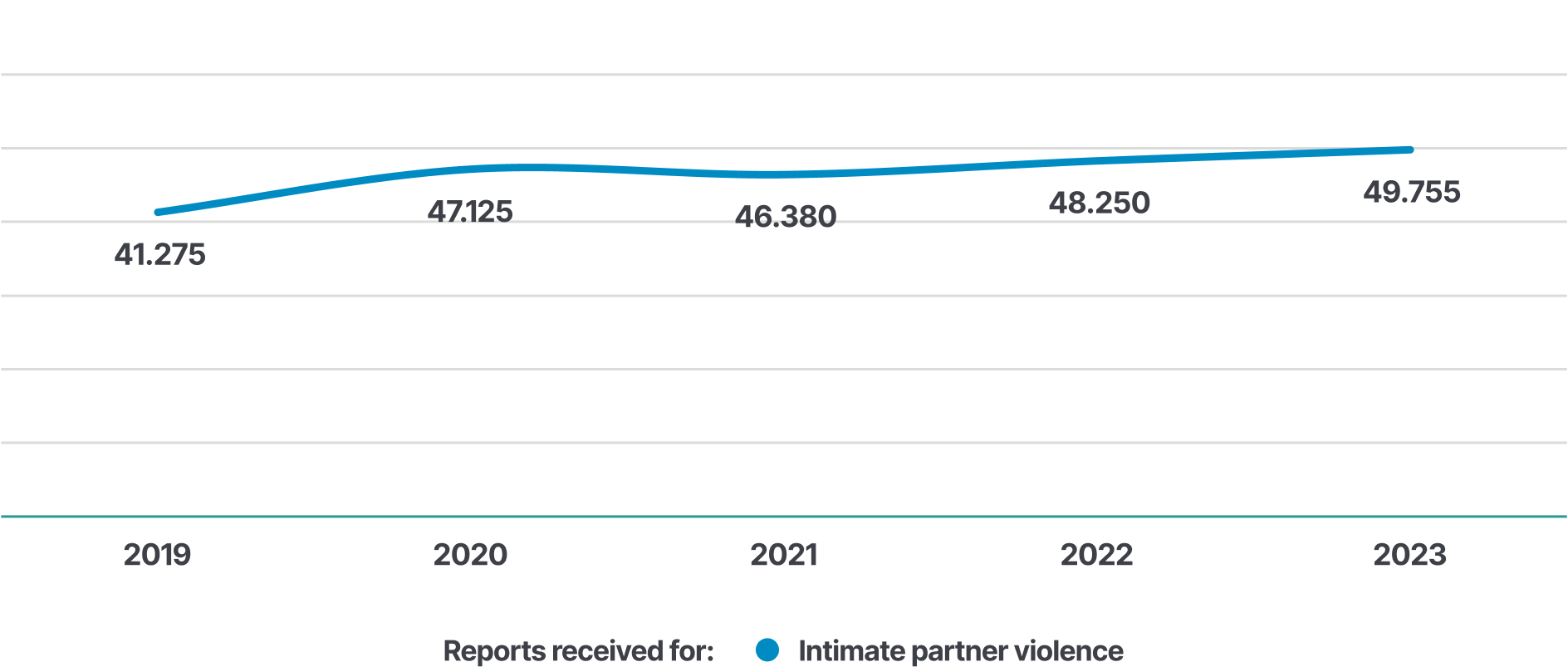This country profile presents the administrative data collected in the Netherlands during the 2023–2024 data collection exercise with the support of national data providers and national researchers.
The list of 13 indicators developed by the European Institute for Gender Equality (EIGE) for the purposes of this data collection exercise is presented in Annex 1.
The data collected in other countries and the methodological report are published in EIGE’s Gender Statistics Database.
Key findings of EIGE’s 2023–2024 data collection exercise
The section below outlines the main findings of EIGE’s most recent administrative data collection exercise on intimate partner violence and domestic violence in the Netherlands.
Main findings
-
Femicide
- In 2022, 48 women victims of homicide were recorded by police.
- In the same year, police recorded 36 women victims of domestic homicide and 24 women victims of intimate partner homicide.
-
Sexual violence
- In 2023, 6,240 female victims of sexual violence were recorded by police. Women represented 87 % of sexual violence victims recorded during that year.
- In 2023, 2,570 people were suspected of sexual violence by the police. Of these, 98 % were male suspects.
-
Support services: reports for intimate partner violence
- In 2023, support services received 49,755 reports for intimate partner violence. The most common types of intimate partner violence reported to support services were emotional violence, physical violence, and stalking.
- In 2023, there were also 127,390 reports received by support services for domestic violence.
Femicide: Number of women victims
EIGE defines femicide as ‘killing of women and girls because of their gender’. It is the most severe manifestation of gender-based violence. EIGE’s femicide classification framework distinguishes between killings committed by intimate partners and family members and other forms of femicide, which are less common.
In the Netherlands, the government adopted a Stop Femicide! Action Plan in 2024. The plan represents a significant step forward, with an aim to enable the police and judiciary to identify signs of violence more effectively. The plan also emphasises the importance of early intervention to prevent violence from worsening.
In 2022, 48 women victims of homicide were recorded by police. In the same year, police recorded 36 women victims of domestic homicide and 24 women victims of intimate partner homicide.
Figure 1 Annual number of female victims of intimate partner homicide, domestic homicide, and any homicide (Indicator 9), 2014-2022

Most femicide victims experience non-lethal forms of gender-based violence before they are killed. Femicide is often the culmination of a pattern of abuse.
Findings from the EU-GBV survey show that 1 in 3 ever-partnered women in the Netherlands have experienced intimate partner violence during their lifetime.
However, only a small share (10 %) of women victims of intimate partner violence in Netherlands report to police. Given these alarming findings, authorities should raise awareness on the ‘warning sings’ of femicide and enhance access to support services for women victims of violence.
Sexual violence: Number of women victims
EIGE defines sexual violence as ‘any sexual act performed on the victim without consent’.
In the Netherlands, sexual violence refers to sexual acts performed without consent or with reasons to suspect the lack of consent. Sexual violence in its different forms is criminalised under Articles 239-254d of the Criminal Code.
Women are the main victims that suffer from sexual violence
In 2023, 6,240 women victims of sexual violence in any relationship were recorded by police. Women represented most (87 %) of sexual violence victims recorded.
Figure 2 Annual number of female and total victims of sexual violence in any relationship (Indicator 6), 2016-2023

Almost all suspects of sexual violence are men
In 2023, 2,520 men were suspected of sexual violence by the police. During the same year, men represented 98 % of sexual violence suspects (2,520 out of 2,570).
Figure 3 Annual number of male and total suspects of sexual violence in any relationship, 2016-2023

Reporting to support services
Number of reports for child abuse and domestic violence
In 2023, the support service Veilig Thuis (Safe at Home), received 127,390 reports for child abuse and domestic violence (from both female and male victims).
Figure 4 Annual number of reports received by Veilig Thuis for child abuse and domestic violence, 2019-2023

Number of reports for intimate partner violence
In 2023, the support service Veilig Thuis (Safe at Home), received 49,755 reports for intimate partner violence (from both women and men victims).
Figure 5 Annual number of reports received by Veilig Thuis for intimate partner violence, 2019-2023

In 2023, the most common types of intimate partner violence reported to Veilig Thuis were emotional violence, physical violence, and stalking. Sexual violence, financial violence, and other forms of violence not included in the previous categories were less reported.
Figure 6 Annual number of reports received by Veilig Thuis for intimate partner violence, by type, 2023

Summary of data availability and next steps
Findings from EIGE’s 2023-2024 data collection exercise in the Netherlands underscore the persistent threat of violence to the safety and well-being of women and girls.
The collection of robust administrative data on intimate partner violence and domestic violence is essential to ensure effective policymaking, resource allocation, and the development of targeted interventions to support victims and prevent further violence.
During EIGE’s data collection exercise, no data was shared on victims, offences, or perpetrators of intimate partner violence or domestic violence in the Netherlands. Moreover, EIGE did not manage to retrieve data on protection orders for victims.
EIGE only managed to retrieve data on victims of homicide (women), victims and suspects of sexual violence (both women and men), and reports received by support services for intimate partner violence and domestic violence.
The limited availability of data makes it difficult to explore the scale of violence against women at the national level.
In May 2024, the EU adopted Directive (EU) 2024/1385 of the European Parliament and of the Council of 14 May 2024 on combating violence against women and domestic violence. Article 44 establishes that Member States must work with EIGE to collect administrative data on these forms of violence and must adhere to common standards. EIGE remains committed to supporting Member States in their efforts to collect comprehensive, reliable data on violence against women and domestic violence.
Further details on the data collected during EIGE’s 2023–2024 data collection exercise are available in EIGE’s Gender Statistics Database and on its website.
Annexes
Annex 1: List of EIGE’s 13 indicators on intimate partner violence and domestic violence